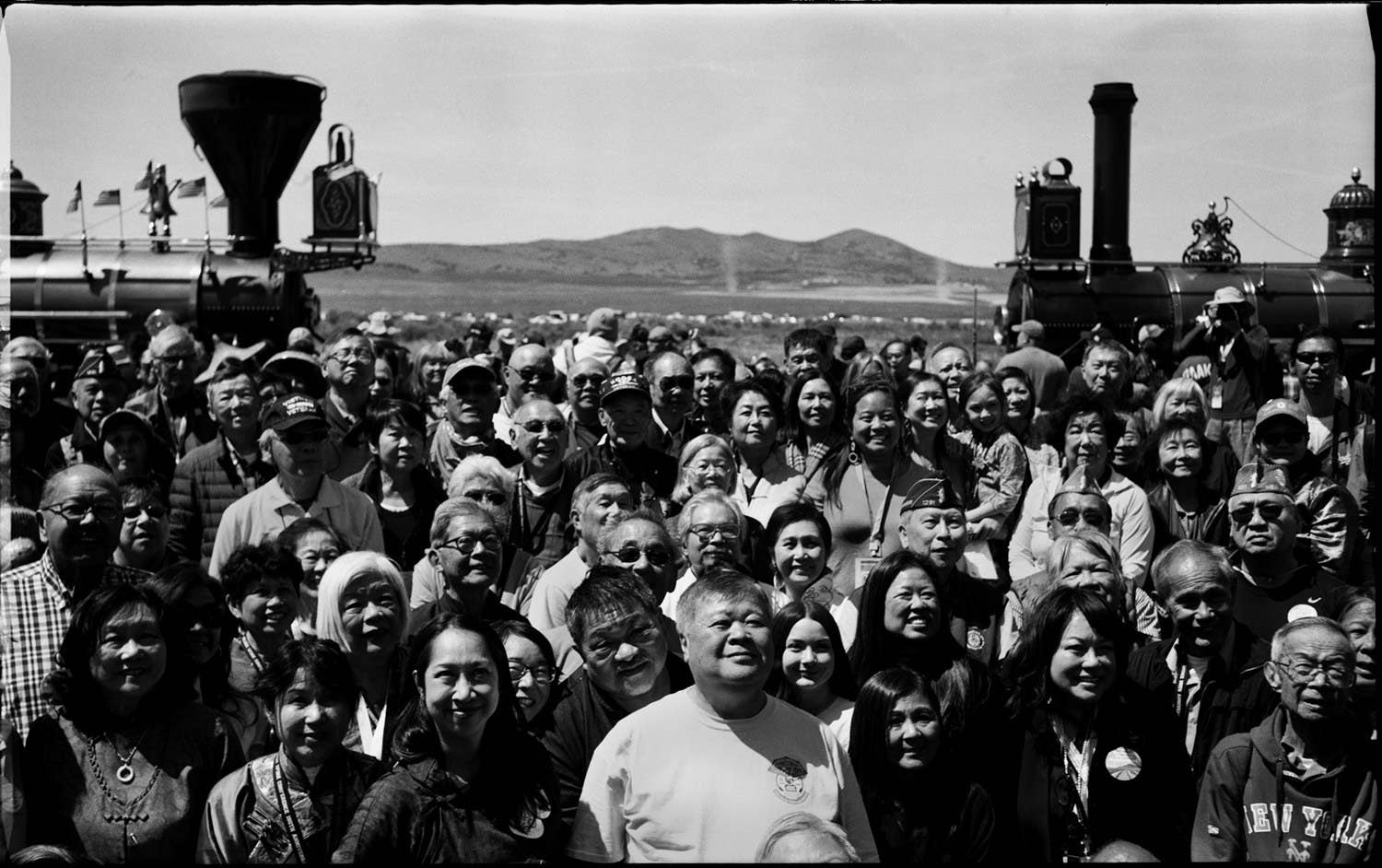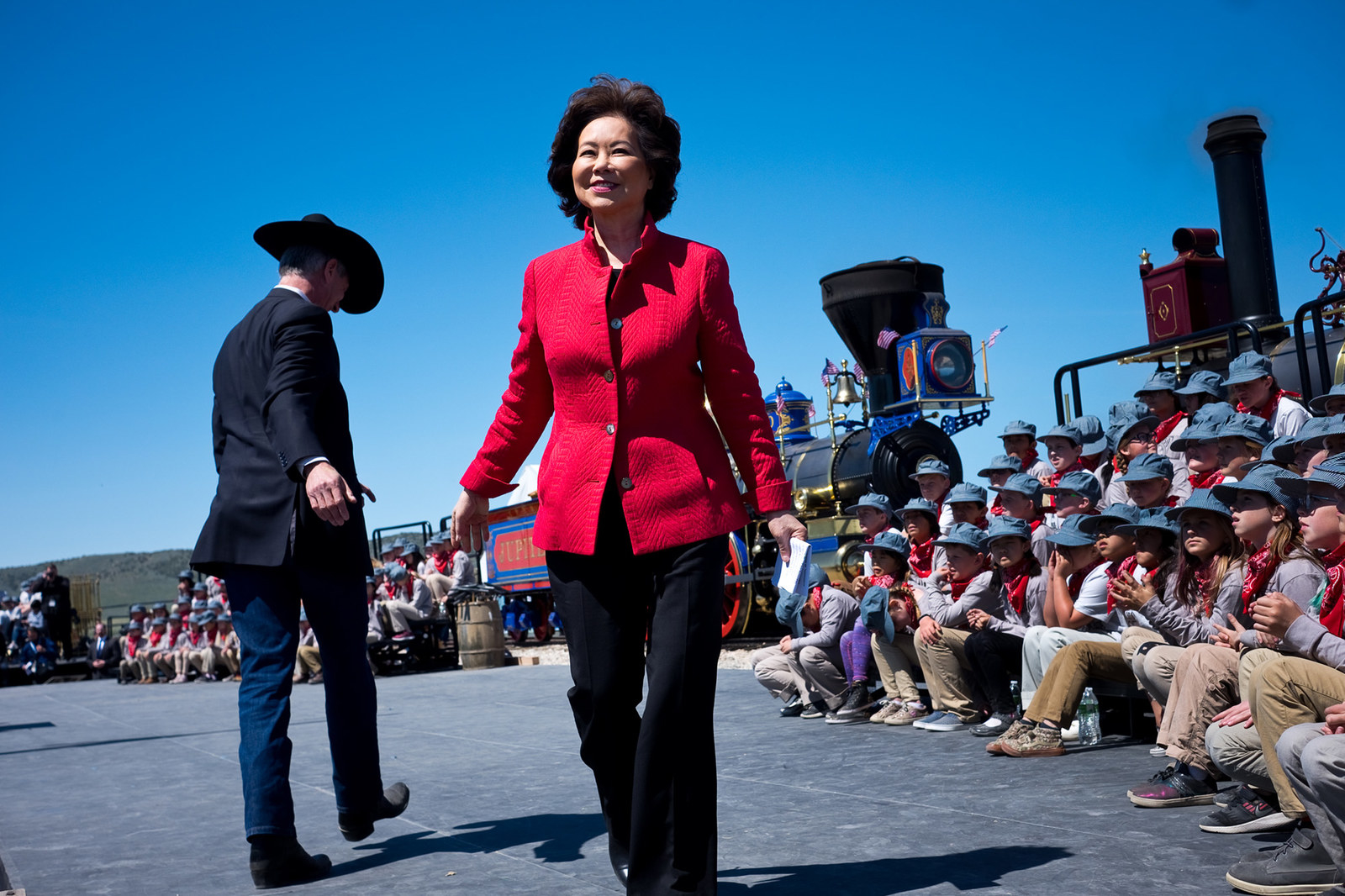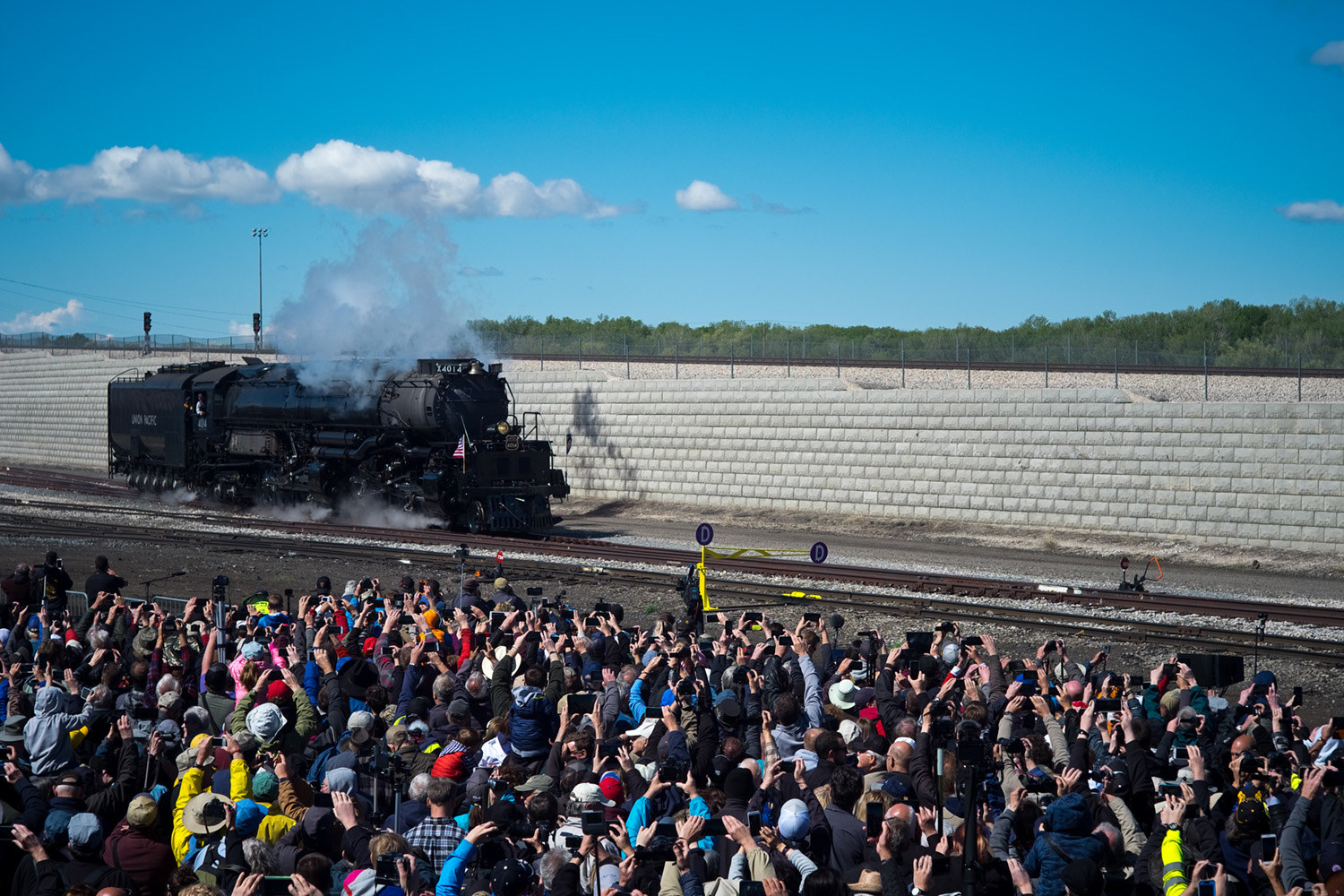
Connie Young Yu has told her story many times before. But on May 10, invited by the state of Utah and the National Park Service, she stood on stage in front of 20,000 people gathered for a triumphant celebration, and opened the day’s ceremonies by saying, “My great-grandfather, Lee Wong Sang, was one of the thousands of unsung heroes, building the railroad across the Sierra Nevada mountains, laying tracks through to Utah, uniting the country by rail. Many descendants of Chinese railroad workers are here today. This is a far cry from 50 years ago. My mother, Mary Lee Young, was the only such descendant present [then]."
Yet why were the Chinese denied their rightful place in history at the 100th anniversary? Why was Philip Choy, president of the Chinese Historical Society of America, kept from making a presentation on the official program? The contribution of the Chinese to the Transcontinental was kept from national memory. The Chinese Exclusion Act of 1882 stopped the immigration of Chinese laborers and denied all Chinese naturalization to US citizenship. In effect for 61 years, the law excluded the Chinese from American history.

Standing a few feet away, listening to her remarks booming out of loudspeakers as a cool wind blew, I felt tears welling in my eyes and a chill run down my spine. For I, too, as a Chinese American, trace my lineage to a village not a dozen miles from Yu’s great-grandfather’s, in Taishan County, Guangdong Province, China. Although my ancestors didn’t work on the American railroad, they too embarked on extraordinary and parallel journeys to arrive on the New World’s shores: smuggled in the coal holds of steamships, assuming fictional identities as paper sons, and suffering decades of separation from wives and children.
Exactly 150 years ago, the first American transcontinental railroad was completed, here on the high plains of what was then not yet a state, at a lonesome and desolate spot called Promontory Summit. If there were three crucial inventions of the 19th century, the steam locomotive, the telegraph, and photography surely comprise them: News of the completed railroad was instantly disseminated from the site by telegram, with the hammer strikes of the final, golden spike. The soon-to-be-iconic photograph of the scene by Andrew J. Russell followed shortly after, on the front pages of newspapers around the world.

I first saw that photograph in a popular historical account published for the American bicentennial celebrations in 1976, when I was 5 years old. It shows hundreds of railroad executives, government officials, and ordinary workers surrounding two steam engines: the Central Pacific’s Jupiter from the west, on the left, and the Union Pacific’s No. 119 from the east, on the right. I first heard about the railroad around the same time, as my Chinese immigrant parents and great-uncles told me about the epic accomplishments of the 12,000-plus Chinese laborers, the hundreds who died in work accidents, and the savage racism they endured. Their story is part of the oral history and tradition that I was raised on. But like many other Chinese American children, perhaps, I noticed that there were no Chinese people in the photograph, and that most accounts scarcely made mention of the Chinese contribution at all.
Starting in 2014, New York photographer and activist Corky Lee has organized an annual reenactment of the iconic 1869 photograph in front of the replica locomotives — with descendants of Chinese railroad workers and other Chinese Americans filling the frame — instead of the all-white denizens of the historic image. This year, 400 to 500 Chinese Americans made the pilgrimage from all across the country in the largest such gathering yet. May Chin Ng, who drove 2,200 miles from Huntington, New York, said that she had to come “before it’s totally gone on the wayside of history.” John Mark, from California, whose grandfather was a railroad worker, said, “I want to pop the champagne that my grandfather could not.” Lee had to move the platform and ladder he was using several times to accommodate the chaotic and growing crowd of Chinese Americans before he could make this year’s photograph.

The joy and sense of delayed justice finally attained that many felt was palpable and moving. Yet the occasion remained primarily one of contemporary American patriotism. American flags flew prominently along the only road to Promontory. US Secretary of Transportation Elaine Chao, the first Chinese American of Cabinet rank, made appropriate comments with anodyne phrasing: “The Central Pacific Railroad needed industrious, tireless workers and the Chinese workers answered the call with great skill and dedication.” It may have been too much to expect her to mention the Chinese railroad workers' disciplined, nonviolent, and successful 1867 strike to be paid the same as their white colleagues, or the anti-Chinese massacres and pogroms in Los Angeles and Wyoming that marred the era.
Local Utah residents and railroading fans from all over made up the bulk of the large crowd. If the multiracial theater group that performed a musical retelling of the great narrative wore the wrong kind of Chinese peasant hats, and Utah Sen. Mitt Romney seemed to be politicking for another campaign already with a frozen smile, it was all emblematic of a certain kind of Middle American state or county fair. A large bronze statue of a buffalo was unveiled; a group of school-age children wore red neckerchiefs in an evocation of the American Old West, perhaps also reminiscent of Young Pioneers in distant countries and epochs, and a Sheriff's Mounted Posse made for picturesque perimeter guards on horseback.
Margaret Yee, a Chinese American resident of Salt Lake City, had some final observations about her railroad worker great-grandfathers on both her paternal and maternal lines: “I think they would feel so happy. They had no idea they could transform the USA, because the Chinese built the railroad, and the railroad built America. Up in the sky they are smiling over us.” The day’s ceremonies ended with four Air Force fighter jets roaring overhead, above bursting fireworks and the band playing the national anthem.

Alan Chin is a photographer and the Managing Director of Facing Change: Documenting America / Documenting DETROIT.
CORRECTION
Connie Young Yu's name was misspelled in an earlier version of this post.
